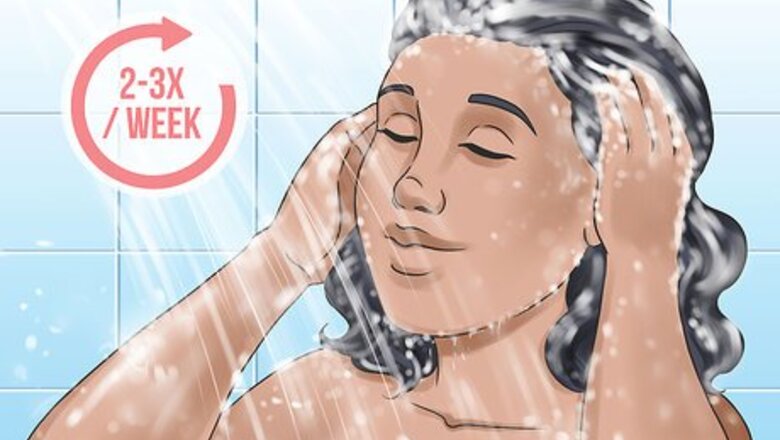
views
Washing Your Hair
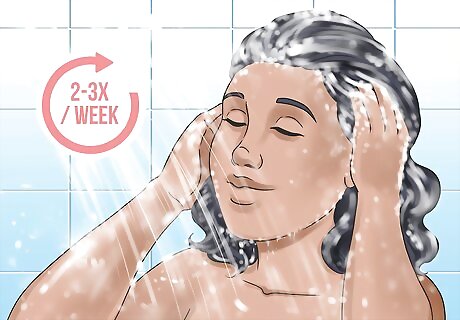
Wash your hair every two to three days. Get your hair wet any more often, and you'll strip your scalp of natural oils. Pick two or three days a week to wash your hair in the shower. On days you do not wash your hair, get your hair slightly damp and massage leave-in conditioner into your roots.
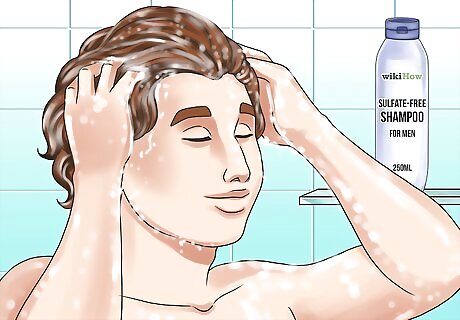
Use a sulfate-free shampoo. Sulfate detergents are usually harsh on curly hair. Accumulated sulfate residue on the scalp can cause dryness and irritation. When shampooing your hair, go for natural alternatives (like coconut or olive oil-based products). Sulfate-based shampoo usually lathers more than sulfate-free alternatives. Use less shampoo than you think you'll need when using sulfate-free alternatives. Sulfate-free shampoos will reduce frizz more than shampoos that contain sulfates.
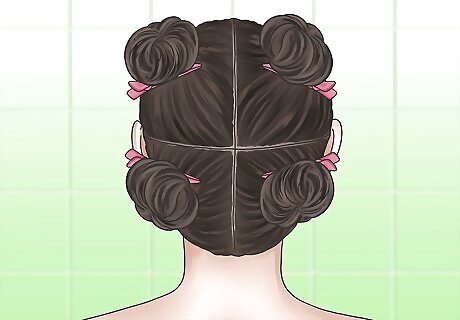
Part your hair into sections to wash it thoroughly. It's easy to wash thick, curly hair unevenly. Separate your hair into 4-6 sections. Twist or pin up your hair to separate it. Remove one twist at a time and wash it thoroughly. Pin it back up as you finish, and move onto the next section until you're finished. Washing your hair in sections takes a longer time, but your hair will tangle less and you'll reach a greater area.
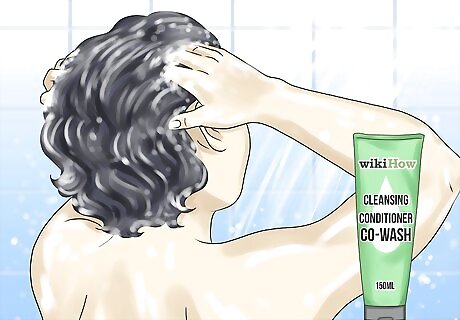
Co-wash your hair once per week. Co-washing is a technique made especially for curly or wavy hair. Reduce how often you use shampoo, and use solely conditioner to hydrate your hair. Laying off shampoo every so often can make wavy hair smoother, softer, and less prone to frizziness. Dry hair especially benefits from co-washing because your hair maintains more natural oils. Don't cut out shampoo completely. Alternate between co-washing and using shampoo to keep your hair from getting greasy. Remember that conditioner cannot clean your hair like shampoo can.
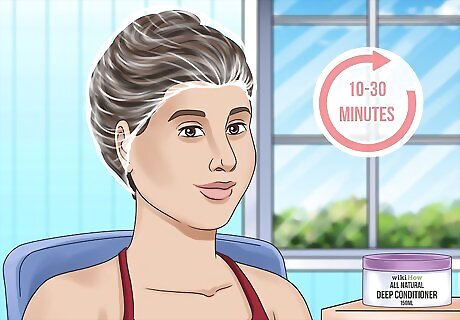
Deep condition your hair at least twice a month. Curly hair tends to be naturally dryer, and it needs lots of hydration to remain healthy and lush. Once every two weeks, wash your hair with a deep conditioning product and leave it in for between 10-30 minutes before washing it out. Replace one of hair washes for the week with a deep conditioning session.
Styling Your Curls or Waves
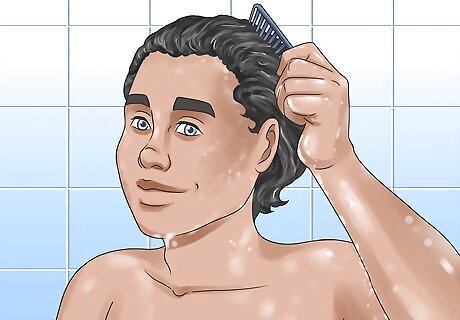
Comb your hair while it's still wet. If you wait until thick hair is dry, you're more likely to deal with tangles. Bring a comb with you in the shower, and smooth out your curls while the conditioner's still in. You can re-comb your hair after the shower or while styling your hair, but this initial combing can keep your hair knot-free.
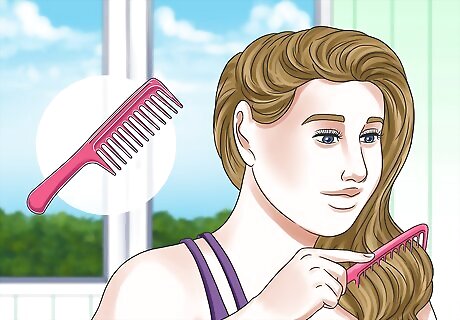
Use a detangling tool to comb. A wide-toothed comb, for example, can preserve your waves and prevent split ends. You can also use your fingers as a makeshift comb to work through tangles in the shower. Avoid using brushes of any kind, as they add too much volume and contribute to frizzy hair.
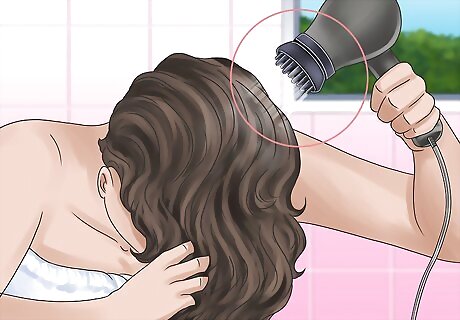
Air dry your hair, or blow dry it with a diffuser. Heat can damage thick or curly hair. Use a towel or soft t-shirt to dry off your hair. If you need to dry your hair quickly, turn your blow dryer to a cool setting and attach a hair diffuser. Diffusers distribute the dryer heat evenly and disturb your curl pattern less.
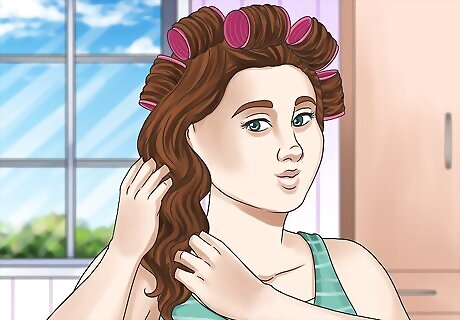
Avoid using straighteners or curling irons. Regularly using thermal tools on curly hair can lead to damage and split ends. Wean yourself off of hot tools and look for natural alternatives, like using hair bands or rollers. If you must use thermal tools, invest in high-quality products and apply a heat protection product before you style.
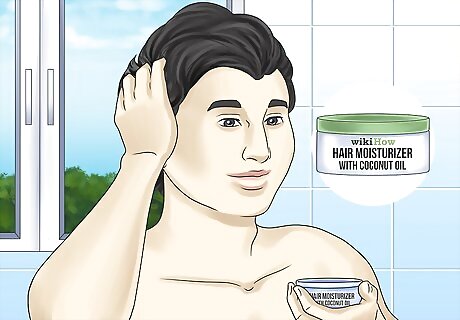
Moisturize your hair when frizzy. Frizziness is often caused by heat and humidity, which causes proteins in your hair to dry out. Moisturizers like coconut oil or frizz creams can restore your curls to their natural pattern. Choose natural oils above synthetic alternatives: natural products absorb into your hair, but synthetics sit on top.
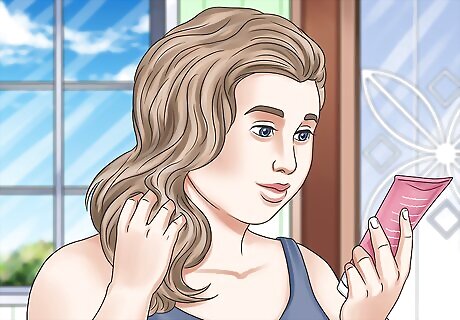
Apply the amount of product suggested on the package. Product buildup can lead to dryness and even hair breakage. Avoid over-saturating your hair with too much moisturizer or hair butter. Read the product directions and only apply the directed amount. On days where you use multiple products, wash your hair in the evening.
Getting a Haircut
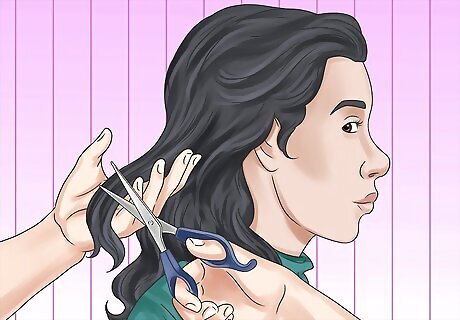
Trim your hair monthly or every two months for healthy hair. Thick hair often suffers from split ends, which can make full hair go limp. Every 6-8 weeks (or when your hair seems stringy), visit your stylist for a quick trim. Cutting wavy, thick hair can be difficult, so unless you are a professional, visit a stylist familiar with curly hair. Trims are important to reduce split ends. If you do not get your hair trimmed, the split end may eventually cause your hair strand to break off.
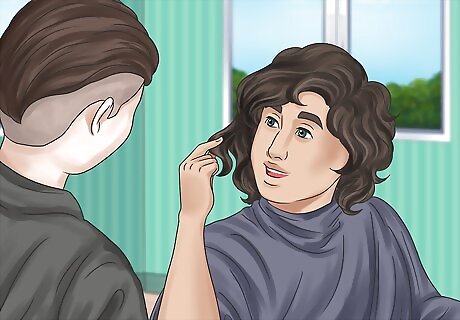
Ask your stylist to take the bulk out of your hair. Thick hair, especially when paired with curls, can easily weigh down your head. Instead of asking your stylist to remove one or two inches (2-5 cm), ask them to remove extra weight. Tell your stylist that you want a looser and flowing feel if your hair constantly feels unmanageable.
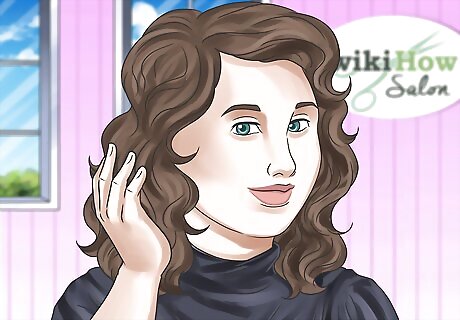
Choose a layered hairstyle. Styles with long layers are great for giving thick hair a natural look and removing some heaviness. Also, tastefully added layers can enhance natural curls or waves. Ask your stylist if they can add texture in the back as they thin your hair.

Shy away from bangs. Short, curly bangs can look uneven or outdated. Unless you're set on bangs, avoid asking your stylist to cut you any. Ask your stylist for a cut that frames your face instead, for a similar and more flattering look.

Go shorter for more manageable hair. Long, curly hair can sometimes defy taming attempts. If you can't find a way to manage your mane, ask your stylist for a shorter style. Cropped hair can keep volume in check, especially styles that are longer in the front than the back.



















Comments
0 comment